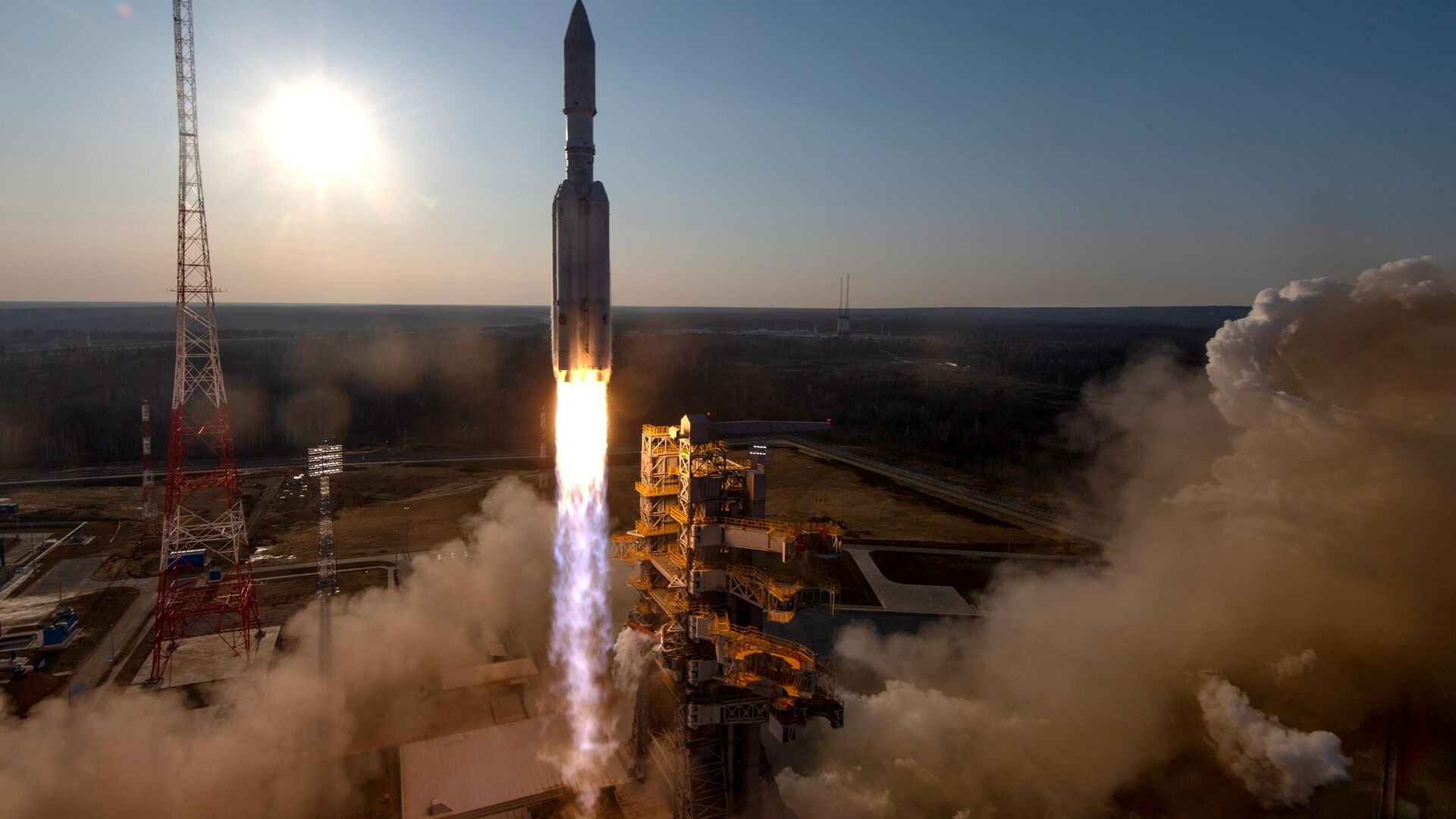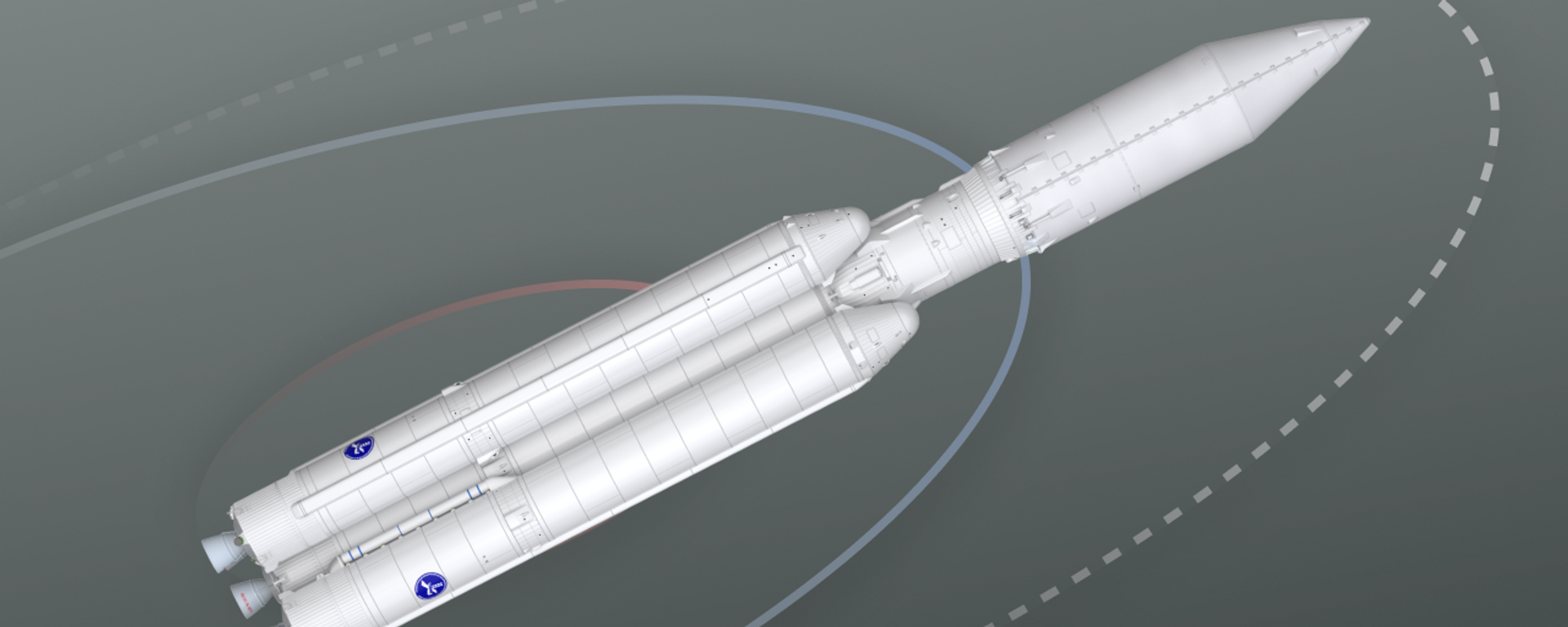https://sputnikglobe.com/20240412/why-angara-a5s-launch-ushers-in-new-era-for-russias-space-exploration-1117899968.html
Why Angara A5's Launch Ushers in New Era for Russia's Space Exploration
Why Angara A5's Launch Ushers in New Era for Russia's Space Exploration
Sputnik International
Russia conducted a successful launch of the Angara 5 rocket on April 11 from the Vostochny Cosmodrome. What does the event mean for the future of Russia's space exploration?
2024-04-12T19:05+0000
2024-04-12T19:05+0000
2024-04-12T19:14+0000
russia
russia
earth
ussr
angara a5
vostochny cosmodrome
science & tech
space
space exploration
international space station
https://cdn1.img.sputnikglobe.com/img/07e8/04/0c/1117901103_0:159:3073:1888_1920x0_80_0_0_7ba3c530105d0b7313599b1d5efb9e1c.jpg
The 761-ton rocket Angara 5 was launched at 09:00 am GMT and later its Orion upper stage successfully delivered the Gagarinets satellite into low Earth orbit.Russia plans to use heavy Angara-5 rockets in its bold project of building a new national orbital station."The success of Angara 5, as well as the success of the launch complex, is crucial for our country's further activities in space. If we are talking about a new orbital station, then the modules of this station can currently only be launched by Angara 5," Dr. Natan Eismont, a leading researcher at the Russian Academy of Sciences’ Space Research Institute, told Sputnik.Previously, the Proton-M, an expendable Russian heavy-lift launch vehicle, was used for such purposes, the researcher explained.The three-stage Angara-A5 is the first heavy launch vehicle developed in Russia after the collapse of the USSR. In the near future, it will completely replace the Proton-M. According to Eismont, Angara 5 has a number of advantages making it better and safer in exploitation than its predecessor.First, Angara 5 runs on environmentally friendly fuel: oxygen and kerosene. Second, the Angara 5 project's modular structure means that it could be used for various purposes, including the construction of a new orbital station, according to the researcher."Angara 5 rockets are something that has been needed for a long time, and now it is being put into operation," Eismont said. "This is a fairly useful carrier for flights to planets, including expeditions to the Moon, and for flights to Venus, Mars, and Jupiter."Last October Russian President Vladimir Putin instructed the government to begin the creation of the Russian Orbital Station (ROS) given Russia's plans to leave the International Space Station (ISS) by 2028. The first segment of the nation's new station is scheduled to be put in orbit by 2027.Eismont believes that Angara 5 will attract the attention of other international participants of the space race. "It will be quite competitive in the market of [space] launch services," the researcher pointed out."That is, this is a serious industrial achievement that has utmost significance for space activities," Eismont concluded.
https://sputnikglobe.com/20240408/russian-angara-rocket-everything-you-need-to-know-before-its-historic-lauch-1117810904.html
russia
earth
ussr
Sputnik International
feedback@sputniknews.com
+74956456601
MIA „Rossiya Segodnya“
2024
News
en_EN
Sputnik International
feedback@sputniknews.com
+74956456601
MIA „Rossiya Segodnya“
Sputnik International
feedback@sputniknews.com
+74956456601
MIA „Rossiya Segodnya“
angara-5, russian space program, angara launch, angara a5 rocket
angara-5, russian space program, angara launch, angara a5 rocket
Why Angara A5's Launch Ushers in New Era for Russia's Space Exploration
19:05 GMT 12.04.2024 (Updated: 19:14 GMT 12.04.2024) Russia conducted a successful launch of the Angara A5 rocket on April 11 from the Vostochny Cosmodrome. What does the event mean for the future of Russia's space exploration?
The 761-ton rocket Angara 5 was launched at 09:00 am GMT and later its Orion upper stage successfully delivered the Gagarinets satellite
into low Earth orbit.
Russia plans to use heavy Angara-5 rockets in its bold project of building a new national orbital station.
"The success of Angara 5, as well as the success of the launch complex, is crucial for our country's further activities in space. If we are talking about a new orbital station, then the modules of this station can currently only be launched by Angara 5," Dr. Natan Eismont, a leading researcher at the Russian Academy of Sciences’ Space Research Institute, told Sputnik.
Previously, the Proton-M, an expendable Russian heavy-lift launch vehicle, was used for such purposes, the researcher explained.
The three-stage Angara-A5 is the first heavy launch vehicle developed in Russia after the collapse of the USSR. In the near future, it will completely replace the Proton-M. According to Eismont, Angara 5 has a number of advantages making it better and safer in exploitation than its predecessor.
First, Angara 5 runs on environmentally friendly fuel: oxygen and kerosene. Second, the Angara 5 project's modular structure means that it could be used for various purposes, including the construction of a new orbital station, according to the researcher.
"
Angara 5 rockets are something that has been needed for a long time, and now it is being put into operation," Eismont said. "This is a fairly useful carrier for flights to planets, including expeditions to the Moon, and for flights to Venus, Mars, and Jupiter."
Last October Russian President Vladimir Putin instructed the government to begin the creation of the Russian Orbital Station (ROS) given Russia's plans to leave the International Space Station (ISS) by 2028. The first segment of the nation's new station is scheduled to be put in orbit by 2027.
"Now it is planned to start a gradual decommission of the ISS," explained Sputnik's commentator. "The new station will have new capabilities. This orbital station is supposed to be built from modules weighing around 24 tons. It would be easy for a heavy-class rocket Angara 5 to carry them. But in fact, the [rocket's] modification suggests it can deliver a larger payload of 37 tons in low orbit."
Eismont believes that Angara 5 will attract the attention of other international participants of the space race. "It will be quite competitive in the market of [space] launch services," the researcher pointed out.
"That is, this is a serious industrial achievement that has utmost significance for space activities," Eismont concluded.



